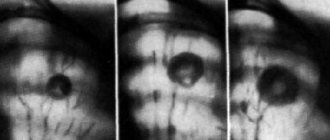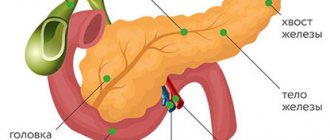How to improve your drinking regime? Of course, there is no need to force a child to drink water. When thirsty, he will ask for a drink. But it is worth considering that the baby can play too much and forget. Therefore, it is worth periodically offering him something to drink. Pay attention to what kind of water your child drinks and its composition.
If certain salts appear in the urine regularly and in large quantities, then in this case we can talk about dysmetabolic nephropathy. Sometimes this disease leads to urolithiasis in older age, as well as inflammatory diseases in the kidneys. The situation requires more careful attention, identifying the causes and, if possible, eliminating them.
Reasons for the appearance of salts in urine:
- climatic (dry and hot climate);
- features of the composition of drinking water (high hardness);
- increased level of solar radiation;
- content of micro- and macroelements in the external environment (lack of magnesium, iodine, excess calcium);
- unbalanced diet (deficiency of vitamins A, B6, PP, hypervitaminosis D, excessive consumption of certain foods, insufficient consumption of foods containing unsaturated fatty acids, for example Omega-3);
- drinking disorders;
- taking medications (for example, sulfonamides, diuretics, cytostatics);
- inflammatory kidney diseases;
- hereditary predisposition.
Treatment of the disease
The main method of combating oxaluria is taking medications. In addition, patients should follow a strict diet, which involves the complete exclusion of foods containing oxalic acid.
Surgical intervention is performed extremely rarely and only in cases where oxaluria has not been treated for a long time and has caused serious consequences for the human body. As additional recommendations, the patient is advised to increase the amount of fluid consumed daily. This helps reduce the concentration of salts in the urine. Vitamin therapy is also prescribed, including preparations containing vitamins A and B6.
Most patients, after completing drug treatment, are advised to undergo sanatorium-resort procedures, preferably at balneological resorts.
If you find an error, please select a piece of text and press Ctrl+Enter
Symptoms of salts in the urine (crystaluria):
- abdominal pain during urination;
- visible sediment in the urine, deposits on the potty (which may be difficult to wash off);
- irritation, redness and itching in the external genital area.
For a child with dysmetabolic nephropathy, drinking regime is important. Parents are wondering how much to drink? We have prepared a table for you that shows the daily water requirements for children.
Symptoms of oxaluria
Children over five years of age and adults experiencing oxaluria experience the same symptoms:
- severe pain occurs in the lumbar region;
- pain in the abdominal area;
- frequent urination, with a simultaneous increase in the amount of urine produced;
- renal colic (does not always occur);
- the patient constantly feels tired;
- neurological disorders: headaches, neuroses.
In children under five years of age, the disease can be completely asymptomatic.
Types of uric salts:
Oxalates
. Most often found in the urine of a child. They can be caused by diseases of the urinary system, various inflammations, stomach ulcers, poisoning, as well as an excess of vitamin C in the diet (citrus fruits, chocolate, sorrel, etc.) and a lack of other vitamins (E, A, group B).
Urats
. Externally, these salts look like a dark red sediment in the urine. The reason for the increased content of urates in a child’s urine is poor diet - a large amount of meat, fish products, legumes, chocolate, as well as a lack of fluid in the body. Sometimes the presence of urates indicates certain blood diseases.
Phosphates
. They can be detected in urine even in the absence of diseases, for example, due to overeating. In this case, the pH level is disrupted, the acidity of the urine decreases, and the phosphate content increases. The amount of these salts is also affected by the diet: an abundance of foods rich in phosphorus, abuse of alkaline mineral water.
Free consultation with a urologist
Why do kidney stones form?
Different types of stones form in different people for different reasons.
Certain medical conditions, such as high blood pressure (hypertension), diabetes, obesity, osteoporosis, or chronic diarrhea, may increase your risk. Heredity also plays a role in the formation of, for example, oxalate kidney stones. Certain metabolic disorders in your body, such as high levels of calcium or oxalate, which are common components of foods, may also play a role. Some medications and supplements, such as cough suppressants, migraine medications, and antiepileptic drugs, also increase the risk of kidney stones. For stones to form, human urine must be supersaturated with stone-forming (“lithogenic”) compounds, such as calcium, oxalate, and magnesium ions. This means that there is not enough fluid in your urine to dissolve solid particles that can form stones in the urinary system. These compounds also often form crystals when the urine has low levels of substances called "lithogenesis inhibitors", i.e. reducing stone formation. Inhibitors slow the formation and growth of kidney stones. One of the most important inhibitors of lithogenesis is citrate.
Who can get kidney stones?
Every year, more than half a million people seek emergency care for kidney problems. Worldwide, 1 in 10 people can expect to have a kidney stone in their lifetime. In Russia, in 2021 alone, more than 214 thousand people were registered with newly diagnosed urolithiasis. The increase in the incidence of urolithiasis in Russia from 2002 to 2014 was +34.5%. The trouble is that even after removing a stone from the urinary system in 50% of people, kidney stones form again within 10 years.
What are the most common kidney stones?
The most common type of urinary stones are oxalate stones, which are composed of calcium oxalate crystals. According to domestic data, such stones are found in 65% of cases. Next in descending order are phosphate (19%), urate (15%), cystine (1%) stones. Foreign studies say that oxalate forms of urolithiasis occur in up to 80% of cases.
What are oxalates?
Oxalates are salts of oxalic acid. Oxalates are end products of normal human metabolism, but they are also found in various foods (mainly plant foods). After absorption in the intestine, oxalates enter the blood and are then excreted by the kidneys. In urine they bind to other ions, calcium, magnesium and sodium. When an oxalic acid ion combines with a calcium ion, a poorly soluble salt is formed - calcium oxalate. Supersaturation with calcium oxalate is the most important condition for stone formation, since their solubility does not depend on the acidity (pH) of the urine.
Does dietary oxalate intake affect the formation of oxalate kidney stones?
Yes. You should try to avoid foods rich in oxalate to maintain normal levels of oxalate in your urine. You should avoid eating rhubarb, celery, spinach, beets and sesame seeds, all of which have very high oxalate content.
Black tea, chocolate, nuts (including peanut butter), and cocoa contain moderately high levels of oxalates. You don't need to eliminate them completely, but watch the amount you consume.
Does dietary calcium intake affect the formation of calcium oxalate kidney stones?
Interestingly, too little calcium in your diet may actually increase your risk of stone formation by increasing urinary oxalate levels. Daily intake of up to 1000 mg per day is safe for individuals with calcium stones.
Among food products, the highest calcium content is found in dairy products (milk, yogurt, cream and cheese). A normal, varied diet will give you about 500 mg of calcium every day. Approximate calcium content in dairy products:
- milk and yogurt - 120 mg per 100 g
- soft cheese - 400 mg per 100 g
- hard cheeses - up to 1000 mg per 100 g
If you have too much calcium in your urine, you may benefit from limiting your calcium intake, but you should discuss this with your urologist or GP.
Why are oxalate stones dangerous?
The most dangerous complications of urolithiasis, including oxalate kidney stones, are:
- renal colic is a complete blockage of the urinary tract by a stone, leading to an extremely severe attack of pain and fraught with infectious complications;
- acute or chronic pyelonephritis is a bacterial inflammation of the kidney tissue, which can pass into the purulent phase and lead to the formation of purulent cavities (abscesses)
- renal failure is a life-threatening disorder of all types of kidney function, which, among other things, can be caused by kidney damage from calcium oxalate crystals.
h
Are there any general recommendations for preventing the formation of kidney stones?
It is important to lose weight if you are overweight. Increased physical activity should be part of any weight loss program.
Remember to drink plenty of fluids and stay hydrated, especially if you sweat a lot, such as during exercise.
Are there any tests to find out why oxalate stones are forming in my kidneys?
Yes. All patients who have been diagnosed with a kidney, ureter or bladder stone should have blood tests to check their kidney function and make sure their oxalate, uric acid and calcium levels are not elevated. In high-risk stone-passers (young patients and those who have recurrent stones), a 24-hour urine sample should be collected to measure the level of certain chemicals in the urine (called a metabolic disorder test), namely oxalates, calcium, phosphorus, magnesium, citrate. Your urologist or primary care physician can tell you more about this.
What else can I do to prevent oxalate kidney stones?
Only 10-15% of the oxalate in your urine comes from food. Therefore, there is no need to completely remove oxalate-containing foods from your diet. However, you should aim to consume oxalates in moderation (and wisely).
Foods that are particularly high in oxalates should be consumed in minimal quantities.
The following foods are known to have high oxalate content:
- tea and coffee (more than two to three cups per day)
- nuts (such as almonds), sesame seeds, and nut products (such as peanut butter)
- cocoa and chocolate
- some fruits (figs, tangerines, plums, berries and currants)
- rhubarb
- soy products (tofu, soy milk, soy cheese and soy ice cream)
- some vegetables (celery, spinach, leeks, orca, parsley and beets)
Are there any natural remedies to reduce oxalate levels in urine and blood?
Yes, currently there is a modern active complex “Oxalit”, which has a unique set of effects.
The components of "Oxalit" contribute to:
- decreased levels of oxalate and calcium in urine
- increasing the content of antilithogenic substances that block the formation of oxalate stones
- reducing the size and number of oxalate stones formed
- preventing the attachment of calcium oxalate crystals to cells and tissues of the genitourinary system
This is due to the fact that “Oxalite” contains a unique combination of medicinal plants: Fucus vesicularis (containing fucoidan), Phyllanthus niruri and Desmodium styraxolifolia. The complementary effects of these plants allow Oxalite to reduce the absorption of oxalates in the intestines, make calcium oxalate crystals more soluble, make the structure of stones looser and easier to crush, and prevent the formation of new oxalate stones in the kidneys. Moreover, the components of Oxalite protect the kidneys from damage by calcium oxalate crystals, enhancing the antioxidant protection of tissues.
How to take Oxalit?
According to the results of numerous studies, the maximum effectiveness of the components of "Oxalit" is noted when taken prophylactically, for example, in the presence of salts or oxalate crystals in urine sediment, or after surgery to remove a stone, to prevent recurrent stone formation. Since “Oxalit” is a drug that affects metabolism, its greatest effectiveness is observed when taken in a course course lasting from 3 months.
Source: British Association of Urological Surgeons. Leaflet No: 16/114 Page: 4
Urates in urine (uraturia)
List of prohibited products:
- all offal (kidneys, liver, brains, heart, ventricles, etc.), as well as young meat (veal, lamb, chickens, piglets, etc.) and fish;
- rich meat, mushroom and fish broths (since part of the purine bases goes into the broth during cooking);
- fried, smoked and salty foods (sausages, sausages, salted cheeses);
- animal fats (lard);
- vegetables and fruits with a high content of organic acids: sorrel, lettuce, spinach, parsley, green onions, currants, sour apples, etc.;
- sweets, chocolate, as well as coffee and cocoa;
- alcoholic and low-alcohol drinks;
- legumes;
- baked goods (pies, buns, etc.).
List of permitted products:
- milk and products based on it (cottage cheese, unsalted cheese, sour cream, etc.);
- sweet fruits and berries (raspberries, strawberries, strawberries, etc.);
- vegetables and vegetarian soups with them: cauliflower, potatoes, zucchini, squash, pumpkin, peppers, carrots, cucumbers;
- dried black and white bread (yesterday's baking);
- the amount of salt is reduced to six to eight grams per day, and the amount of liquid drunk (in the absence of contraindications) is increased to two to three liters.
Classification of the disease
Depending on the conditions under which the described disease develops, all existing cases of oxaluria known to medicine are conventionally divided into several groups:
- Group 1. A distinctive feature of diseases of this group is that a person has nephropathy (congenital) in the body. As a result of this pathology, oxaluria develops at the slightest instability of kidney cell membranes.
- Group 2 . Oxaluria that occurs in children against the background of various diseases of the urinary system (pyelonephritis, glomerulonephritis, etc.).
- Group 3 . The third group includes people who developed oxaluria due to nephropathy that arose while living in an unfavorable environmental environment.
Oxalates in urine
List of strictly prohibited products:
- foods high in oxalic acids (spinach, figs, cocoa, chocolate, sorrel, rhubarb, purslane);
- dishes containing fat, as well as smoked, pickled, hot, salted and spicy foods;
- highly rich and fatty broths from poultry, fish and meat;
- products containing gelatin (aspic, jelly, jelly, marmalade).
List of products whose quantity must be limited:
- Vegetables: tomatoes, carrots, onions, beets, green beans, beans.
- Meat: beef, chicken, aspic, liver, cod. Eating meat is recommended only in the first half of the day, since excess animal protein oxidizes urine and promotes crystallization.
- Berries: black currants, blueberries, strawberries, gooseberries.
- Butter.
- Corn, beans.
List of recommended products:
- fruits that help remove oxalates from the body (pear, quince, dogwood, apple, plum, grapes, bananas, apricots);
- foods high in vitamin B6 (buckwheat, barley, pearl barley, millet, wheat bread, liver);
- foods high in magnesium (wheat bran, apricots, seaweed, millet, prunes, oatmeal);
- products rich in pectin and fiber, cucumbers, peas, cabbage, melons;
- Calcium in the diet should not be limited, but it is better to consume dairy products in the first half of the day.
Causes of oxaluria
There are many reasons why a person may develop oxaluria. These may be hereditary factors that provoke the primary form of the disease, and pathological processes in the gastrointestinal tract. The nutritional factor also plays a role.
The main reasons that, according to doctors, sooner or later lead to oxaluria are:
- congenital defects of enzymes responsible for the process of absorption and excretion of calcium oxalate from the body;
- excessive consumption of foods containing calcium oxalate - pepper, rhubarb, sorrel, cocoa and chocolate;
- chronic disease of the gastrointestinal tract - Crohn's disease;
- pathological processes in the intestines - deficiency of lactobacilli, ulcerative colitis;
- surgical intervention performed on the intestines, temporarily or permanently inhibiting its functions;
- abuse of vitamin preparations, in particular ascorbic acid;
- lack of vitamins B6 and/or A in the body;
- living in an area with unfavorable environmental factors.









